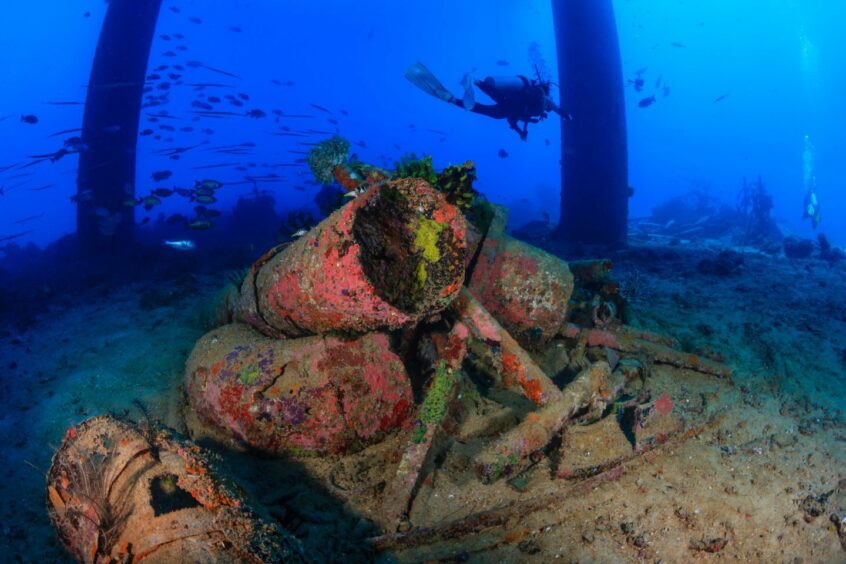
The North Sea is at a turning point. Hundreds of rigs and their associated marine infrastructure are set to be decommissioned. Oil and gas platforms will begin to move out, and infrastructure for offshore renewable energy will move in.
Making the right decisions on decommissioning and restoration now could transform the biodiversity of the North Sea.
For 10 years, the INSITE programme has been gathering data to help assess the impact of manmade structures in the North Sea ecosystem.
We now better understand the role that artificial structures play in the North Sea’s ecosystems and its biodiversity.
That also means we can better predict the impact decommissioning could have on the sea’s biodiversity.
A sea change in biodiversity
Before fishing, shipping and oil and gas arrived in the North Sea, the seabed could have been characterised by extensive shellfish reefs supporting thriving populations of fish, birds, whales and dolphins.
Following decades of human activity, the extent of these diverse reef habitats is much reduced.
They have been replaced by sedimentary areas with less structural complexity and by numerous artificial structures; think of a muddy desert versus an underwater jungle.
These different habitat types are home to different suites of animals with lower associated levels of biodiversity.
For example, a thriving horse mussel bed can host hundreds of species due to its complex structure.
Artificial structures, on the other hand, are likely to host fewer species, with some at very high levels of abundance, like barnacles, anemones, and Dead Man’s fingers.
Industry fundamentally changed the North Sea but can also contribute to its recovery.
We’ve all seen photos of corals and barnacles on oil rig legs and pipelines, but we didn’t have the research to confirm whether these manmade structures contributed to biodiversity in the North Sea.
We do now. Scientists in INSITE’s CHASANS programme are analysing the levels of connectivity of larvae between locations across the North Sea to understand the colonisation patterns of manmade structures, like platforms.
We now better understand the role that artificial structures can play as providers of substrate that acts like a biological building block connecting populations of structural species, including mussels and corals.
That also means we can better predict the impact decommissioning could have on the sea’s biodiversity.
Decommissioning options and their impact on biodiversity
There are three scenarios for decommissioning: complete removal of structures, partial removal by toppling and dragging into position, and cutting off of structure with the placement of the remaining parts.
These scenarios all focus on the removal or permanence of the structures. Now is the time to start thinking about the sea itself. Should we let it rewild or should we intervene with targeted support? If we remove structures completely, what is the consequence for the biodiversity that has built up there during the lifetime of the structures?
Intervention could have a huge impact on restoring the North Sea’s biodiversity, and create a supply chain and industry at the same time.
Nature-based interventions
For deeper sites, we could draft in biological support. Horse mussel reefs could be developed on existing or newly created shelly gravel areas of the seabed to create productive habitat.
In shallower sites, we could add oysters or blue mussels. They’ll perform important environmental functions like cleaning the water, but they could also be farmed. If these reefs embed successfully, it could lead to a North Sea full of fish that could support thousands of jobs.
Evidence and opportunities
Decommissioning has been a contentious issue, but the INSITE programme is helping to provide the evidence base we need to make the right decisions for the North Sea.
At each stage and site, there are opportunities for regulators and industry to consider what they could add to the North Sea to enhance its biodiversity to ensure it can sustainably support livelihoods in the years to come.
Recommended for you

 © Supplied by Jo Porter
© Supplied by Jo Porter